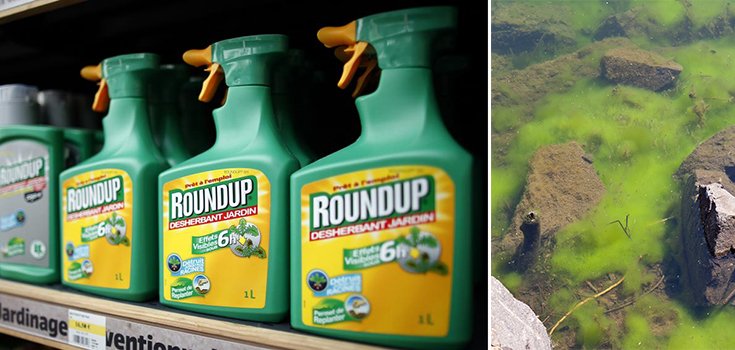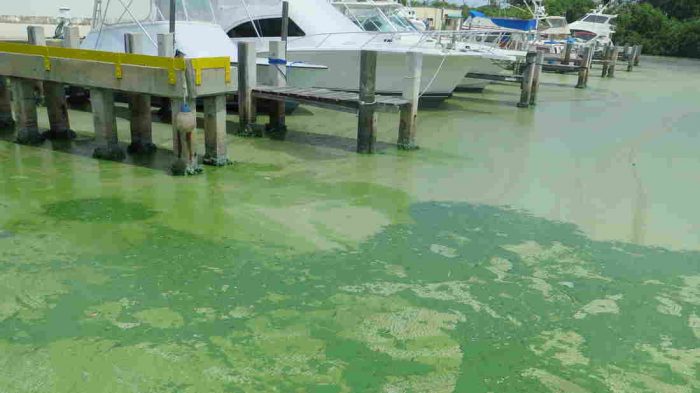Residents in Florida’s Martin County Rally to Ban Glyphosate

Residents gathered in Stuart, Florida, in August to protest the use of Roundup in their community and demand a ban on the herbicide. [1]
Protestor Jackie Trancynger said:
“Let’s ban the use of glyphosate, which is the herbicide in Roundup and some other products, and at least we’ll be doing something to retard the toxicity because that’s what I’m afraid of.”
Florida is currently grappling with “red tide” algae blooms on the west coast and blue-green algae (cyanobacteria) in inland waterways. The noxious-smelling growths emit a putrid smell and can cause respiratory irritation in humans, among other health problems. [2]

Read: Could Blue-Green Algae Blooms be a Cause of Alzheimer’s, ALS?
In mid-August, Florida Gov. Rick Scott declared a state of emergency amid a drop in tourism, breathing problems among residents, and the mass deaths of fish, eels, porpoises, turtles, manatees, and even a 26-foot whale shark that has left local beaches littered with animal carcasses.
There have been reports of breathing difficulties among seniors living in retirement communities, and a recent study shows that hospital visits due to breathing problems spike 50% during red-tide blooms.
Little is known about what causes such massive algae blooms, but scientists believe the problem is exacerbated by pollution and climate change. Some locals are convinced that glyphosate contributes to the blooms’ uncontrollable growth. [1]
There is evidence to suggest the protesters are right. For example, a 2009 study found that Roundup “may be contributing to the growth of harmful algal blooms on Lake Erie.” [3]
Read: Even Legal Levels of Glyphosate may Harm Freshwater Ecosystems
While glyphosate doesn’t create the blue-green algae blooms like those seen in Martin County, there is evidence that the Roundup ingredient feeds them. The authors of the 2009 study found that:
“…many cyanobacteria present in Lake Erie have the genes allowing the uptake of phosphonates, and these cyanobacteria can grow using glyphosate and other phosphonates as a sole source of phosphorus.”
According to Geoff Norris, an emeritus professor with the University of Toronto’s Department of Earth Sciences, glyphosate:
“…has been used heavily in the agricultural areas around Lake Okeechobee and upstream in the Kissimmee River watershed for at least 25 years. Glyphosate provides a source of phosphorus for blue-green bacteria and recent research by others suggest that glyphosate enhances the growth of blue-green bacteria, which become tolerant and absorb glyphosate directly.”

If the protestors were hoping for an on-the-spot glyphosate ban, they were sorely disappointed. Martin County officials said they would need to do their own research into glyphosate before even contemplating a ban. [1]
In the meantime, officials are mulling the idea of limiting or banning the use of biosolids – sewage sludge used to treat soil that many believe contribute to the explosive growth of algae blooms.
Sources:
[1] WPBF ABC News
[3] TCPalm
